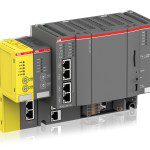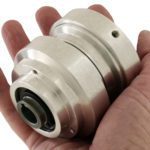Sensors for motion applications include position sensors, speed and proximity sensors. Linear position sensors are used to determine the position of a mechanical component in a broad range of applications. Linear position sensors use an inductive oscillating circuit coupling positioned between the actuator and sensor. Emitter and receiver coil systems are precisely arranged on a […]
FAQs + basics
What is a Motion Controller? Technical Summary for Motion Engineers
Updated May 2015. || Motion controllers are the brains of any motion control system. In feedback-based systems, they take an input command from the user, compare it with a feedback signal from the motor, and take corrective action to bring the output (or actual position) and input (or desired position) in line with one another, […]
What are Incremental Encoders? Technical Summary for Motion Engineers
Incremental encoders, like absolute encoders, are used to track motion as well as to determine speed and position. Incremental encoders generally supply square-wave signals in two channels, A and B, which are offset by 90 degrees, or out-of-phase by 90 degrees. This helps in determining the direction of rotation. The output signals of an incremental […]
What are torque limiters? Technical summary for motion engineers
Updated November 2018 by Lisa Eitel || Torque limiters protect equipment or loads from excessive torque. In essence, they are used to shut down a machine and dissipate any rotational energy without causing damage to the machine. Often, systems operating at low speeds can develop a large quantity of torque. In the event of a […]
What are Stepper Motors? Technical Summary for Motion Engineers
One of the most common motors used in motion control applications is the stepper motor. These motors are used mostly in positioning applications and have the advantage of being able to be very accurately controlled for the most precise positioning applications, down to fractions of a degree without the use of feedback devices such as […]
What are bellows couplings? Technical summary for design engineers
Bellows couplings are one form of flexible coupling with twin coupling ends called hubs capping a precision-engineered corrugated tube that serves as the coupling body. Bellows couplings are known for their exceptional torsional rigidity to accurately transmit velocity, angular position, and torque. Their slight flexibility (at the corrugated bellows) serves to address limited amounts of […]
What is Flat Cabling? Technical Summary for Motion Engineers
An alternative to flexible cabling in some motion applications are flat cables. These cables can incorporate any variety of power, signal, and video conductors in a single compact cable. In addition to every type of electrical conductor, flat cables can also include tubing for air or liquids, and even fiber optics. By incorporating all these […]
What are Machine Controllers? Technical Summary for Motion Engineers
In the most general sense, a controller receives some type of input and produces outputs for some device, most commonly an electric motor. More specifically, machine control, unlike a more specific type of controller such as a motion controller, refers to the control of an entire stand-alone machine such as a CNC machine, packaging machine, […]
What are Absolute Encoders? Technical Summary for Motion Engineers
Encoders can be either absolute or incremental. Absolute encoders have a unique code for each shaft position. Or in other words, every position of an absolute encoder is distinctive. The absolute encoder interprets a system of coded tracks to create position information where no two positions are identical. Another feature is that absolute encoders do […]
What are roller chains? Technical Summary for Motion Engineers
Updated April 2015. || In any motion control system, the object is ultimately to move some kind of load. The component in the motion system that converts electrical energy into mechanical energy is the motor. But the task doesn’t end there. A motor’s output shaft has to connect somehow to whatever the load is. This […]





